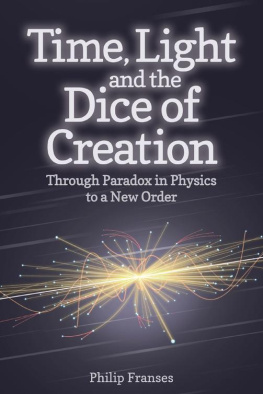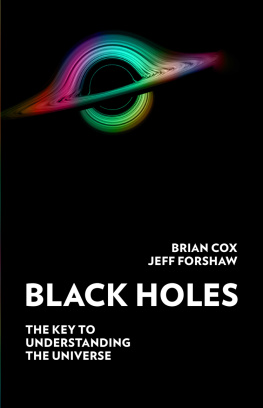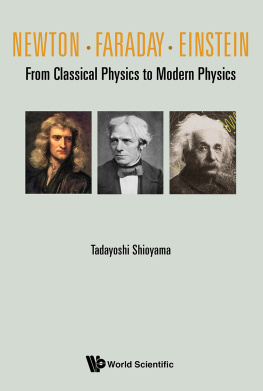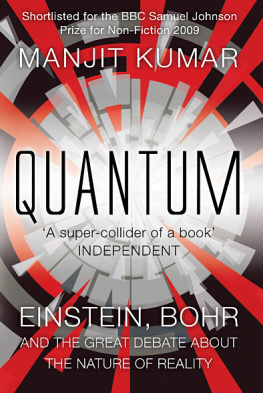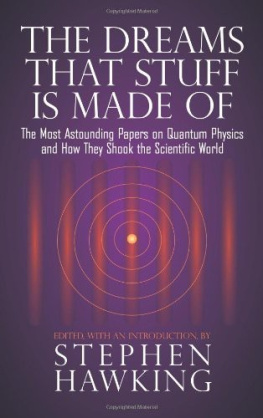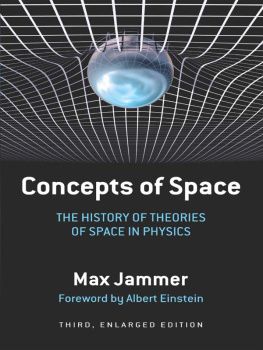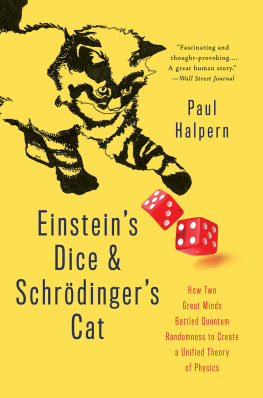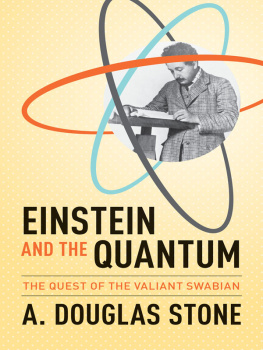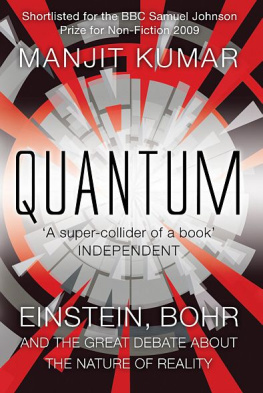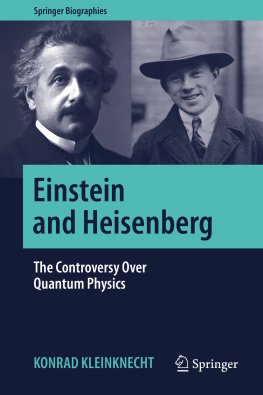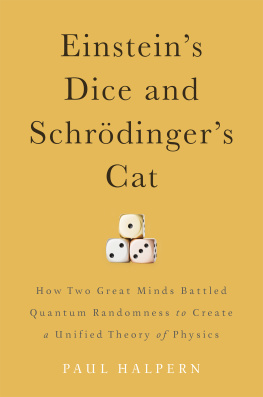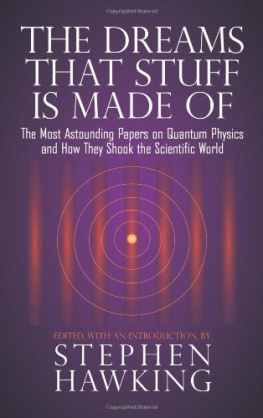Praise for
Time, Light and the Dice of Creation
Philip Franses is a pilgrim in life and thought. His book is an invitation to explore the cracks between the hard facts of science. It looks for meaning rather than measurement. We realise that the journey itself is the goal. The message of this book is a way of living.
Shantena Augusto Sabbadini, physicist, teacher and writer,
Associate Director of The Pari Center of New Learning, Italy
Franses rich and insightful exploration of the tensions in scientific inquiry between wholeness and its constituent parts mirrors beautifully the two ways of understanding reality in deep Buddhist meditation. Absolute Reality oneness or wholeness is experienced by investigating appearances which appear separate. What feels like a tension or paradox between the particular and the Absolute is actually an experience of the same thing, viewed from different perspectives. There is no paradox because there is no opposition everything manifests in its separateness and in its wholeness simultaneously.
Margaret Wheatley, author of Leadership and the New Science and many other books
The light of wholeness
The title and cover of this book reflect an aspiration to recover the light of wholeness. Wholeness, it is said, contains everything about itself, within itself. Wholeness is a quality one recognises as the impetus to ones actions, or the motivation behind the scenes, without ever revealing itself fully. Wholeness is what one meets on a journey, as the source and end of adventure.
In the second half of the nineteenth century, science set out to discover a path, about which everything at every stage could be exactly known. The sense of mystery into which one journeyed was replaced by the static elements of reason by which one could explain the world. The twentieth century needed an instrument to harness wholeness into useable theorem. So a method was developed to tease this light of wholeness into the dark containment of a pure rationality.
The debate around quantum theory naturally focused on wholeness, since there was no complete definition of individual existence independent of context. Wholeness was conceived of as a mathematical artefact. The world only had reality as it was brought into being through the act of measurement. Measurement is a very limited application of something much wider which is seeing. True seeing is not about the measurement of a quantity, but the engagement into a situation to discover its meaning that is, the convergence of content and happening on a form.
So having declared measurement as the way of interacting with the world, very conveniently one has dropped off the end of physics without anyone noticing all those difficult possibilities to do with unmeasurable routes to meaning.
It seems then that we have done the impossible: we have placed the realisation of meaning inside knowledge and nothing can ever happen to disprove this assumption! It seems a cast-iron case. Only the expectation that knowledge already has about the world is a legitimate basis for experience.
Once physics has made the step of sealing meaning into knowledge, nothing can ever happen to test whether that step was indeed justified. After all, our knowledge is our own, our institutions are free to set their own academic standards, so what else is there to even challenge whether this step was legitimate?
Surely then this book is simply another commentary on the futility of the move to seal meaning into knowledge, unable as we are to penetrate into the protective containment of our conceptual hold on the world? The attempt we make to face this paradox cannot be solved from within the method of cause and effect.
As every child knows, wholeness is the route to life. When I was six years old, I had a desk. I had many precious things in it and I thought, Well, it is not really safe having them all in this desk because I have a key here And though its locked, somebody can take the key and unlock it. I had the idea of putting the key into the drawer that was locked, through a small crack that was there. So, nobody could get to it.
My desk locked by a single key, became securely protected at the moment when, fitting the key through the slit between the locked drawers, all opening was prohibited. This event reflects what has happened to science. Rather like my desk drawer with key inside it, the conceptual world of science has closed about its own capability to understand precisely what its theories may statically describe.
The present book reopens the question of meaning that lives in paradox and retakes a path into the unknown, to find where we are beyond mere measurement.
Method
The chapters which follow, like the faces of a dice, are not chronological, but each opposition fits to add to the significance of the previous ones. The story is built up through the points of view of physicists that reflect one another. The understanding accumulates through reflections that play on one another, to give a suggestion of the whole quality pointed to beyond. All the perspectives develop an understanding about the world and our place in it, without having to fix what it is we are describing. The book is as a juxtaposition of faces that together hold the chance of existence acting into order.
The first section is called The Dice of Existence. This section details a series of opposing faces in the history of physics. The mirror reality of the atom is reflected in the many faces implicated in its discovery. Bohr meets with Heisenberg on the edge of global destruction; Pauli meets with Jung in the dreams of creation; Bohm meets with Bortoft in the quest of existential unification. The next chapter jumps to the origin of physics. Newton meets Leibniz in the courtroom of the Royal Society to judge over who first invented calculus. The dispute of philosophies is between Newtons insight into material motion and Leibnizs foresight of the existential fulfilling of unity. Einstein resolves the dispute by placing another mirror on the world, the immutable speed of light. The third chapter is about Maxwells theory of electromagnetism. Light has two faces, one seeding a causal and the other a prophetic account. The lived tension of these oppositions is illuminated throughout in the way significance writes chance into coherence.
In a dice, the separate faces require opposition to present their particular possibility. And similarly here, the paradoxical opposition of various theories and predictions of physics face their partial perspectives to a deeper, whole truth of experience.
In the second section, The Dice of Renewal, the future is engaged as a practical test. The action moves to fateful happening concerned directly with the world. Right at the heart of physics, chance is the yeast that brings through the established parts of the first section, the movement into the whole of the second section. The method knows from within its own process how the partial elements of potential are drawn into whole expression. The logicians Spencer Brown and Lou Kauffman, in the sixth chapter, see the world as a movement whose arbitration is either wholeness or emptiness. Kauffman describes this as the concept of a system whose structure is maintained through the self-production of its own structure. (Kauffman 2015, p. 12). The way of working with this logic is to travel inward through the methods paradoxical premise, making connection until arriving at the essence of nature that retrospectively defines where we have come from. This method whittles away towards an essence that is the worth of the journey of inquiry.
In the third section, Creation, time faces energy in the specific account of meaning. The last chapter finds an unexpected third reflection on the story of the first chapter. Carl Friedrich von Weizscker travelled with Heisenberg to meet Bohr in Copenhagen to discuss the feasibility of developing an atomic bomb. Von Weizscker later went on to write

